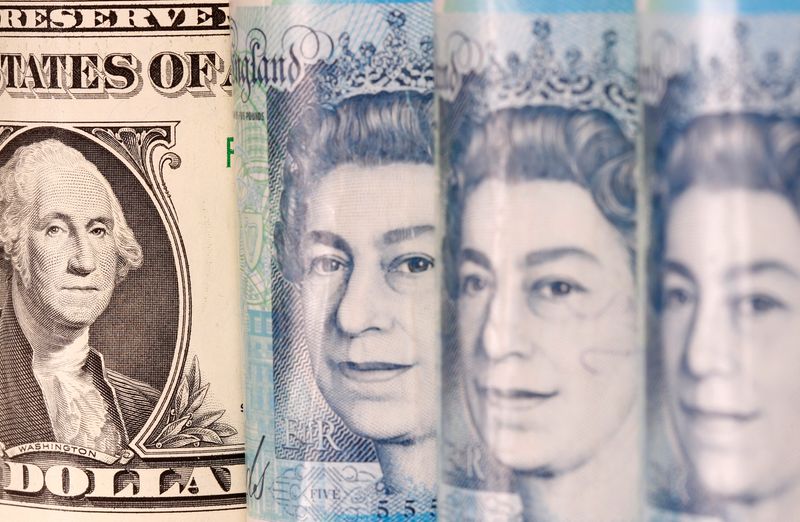By Samuel Indyk
LONDON (Reuters) - The pound edged higher on Wednesday even as data showed economic growth stagnated at the start of the second quarter, as analysts looked beyond one-off factors and still expected the economic recovery to gather pace in the coming months.
Britain's economic growth was flat month-over-month in April, the Office for National Statistics said, weighed down partly by the impact of heavy rain on activity throughout the month.
"The picture of a broad-based recovery from last year's minor recession remains intact with only the rain-disrupted construction sector failing to grow three-months-on-three-months in April," said Rob Wood, chief UK economist at Pantheon Macroeconomics.
The pound was last up 0.1% against the dollar at $1.2754.
Sterling was also gaining slightly against the embattled euro, rising to 84.28 pence per euro. On Tuesday, it hit its strongest level since August 2022 at 84.185 pence.
The decision to call an election in France has driven the pound against the single currency this week, rather than the growth numbers, said Danske Bank FX analyst Kirstine Kundby-Nielsen.
"Inflation data is a much more important input for the Bank of England," Kundby-Nielsen added.
Markets are pricing around a 70% chance that the BoE cuts interest rates by the September meeting, while around 35 basis points of rate cuts are priced in this year.
"Given inflation persistence both domestically and globally coupled with political uncertainty in France we see downside to EUR/GBP in the near-term," Kundby-Nielsen said.
The U.S. is set to be the main driver for currency markets in the near term, with inflation figures and the Federal Reserve policy announcement both due later on Wednesday.

"Due to the ongoing underlying upward pressure on prices from services, our experts believe that there is no easing in sight, especially for the core rate," said Antje Praefcke, FX analyst at Commerzbank (ETR:CBKG), in a note.
"This is more likely to underpin the expectation that the Fed will not cut the key interest rate until the end of the year at the earliest."